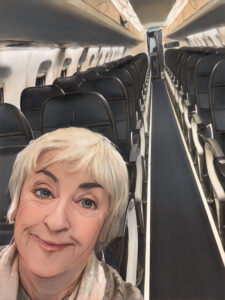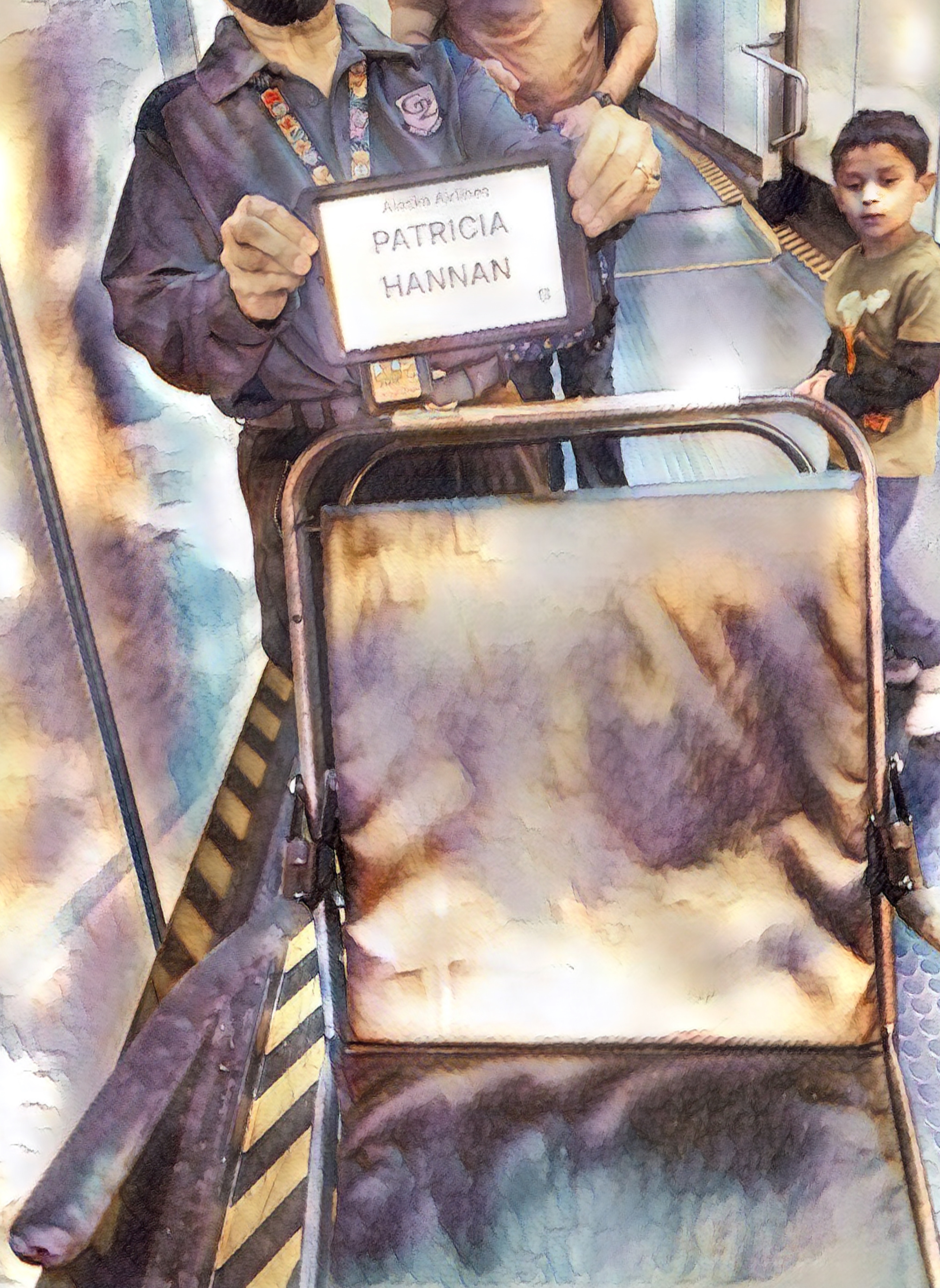“Excuse me?!” I must have misheard or misunderstood the airline staff person crouched beside me.
She repeated, “I want to make sure you have all the accessibility you need. Can I get you anything else, a Braille card?”
I hadn’t misheard. “Thank you, but no. My vision is fine, it’s my hearing that needs help.”
“I am so embarrassed,” she said.
“Don’t be, it happens all the time.”
This is what I said, but really? She was right to be embarrassed. It’s hard for me to believe that people free of any significant sensory, mental health or physical disabilities, somehow lump them all into the person claiming any single one of them.
Got hearing loss, ma’am? No problem – here’s a Braille card to pass the time until you board. We’ll also have someone hold your elbow as you walk down the ramp to the plane, and we’ve ordered a staff person with a wheelchair for you when you land.
Variations on this theme play out at the airport all the time for people who identify as having hearing loss. I always self-identify when I’m flying alone, which is frequently. And I never opt for an exit row, in spite of the fabulous extra leg room. I don’t want to be that person in an emergency, who didn’t quite understand the instructions from the flight attendant before takeoff and who, struggling to open the exit, screams WHAT at the panicked people trampling her to get out of the plane.
When the Hearing Husband is with me, I don’t bother self-identifying in advance because he has pristine hearing and has promised to protect me in the event of an emergency. Yet even when traveling with him, I should not be sitting in the exit row. What if for some reason he became immobilized and it fell to me to get the door open? On the one or two occasions when we in selfish mode, we sat in the exit row. I told the Hearing Husband that I would watch him out of the corner of my eye while pretending to understand the flight attendant asking important questions such as, are you able to carry out the role of saving people’s lives by opening the door without further instruction? If the hearing husband nodded, I would nod. If he said yes, he would say it loudly so I could follow suit.
Not my finest moment. If I want accessibility, I shouldn’t deny it to other people whose lives are threatened by a cheater screaming, “What was it she said to do?” What a SNAFU (Situation Normal All Fouled Up. Something like that)!
I recently flew from Austin, where I had attended the convention of the Association of Late Deafened People, to California where we are spending the month with family. I had identified as having hearing loss when I made my reservation and, at the gate, I self-identified to the staff, asking them to notify me when it was time to board. Which they did, and I was the first person aboard after the pilots and flight attendants. Upon entering the plane, I advise the staff that I can’t hear overhead announcements. Spare me the cruising altitude or weather at destination – I’m only interested if something unusual or scary is going on.

Edited in Prisma app with Cartoon
All good – until I disembarked in San Jose. And there she was – a lovely lady waiting for me with a wheelchair. (As the sign says, my first name is Patricia.) It’s clear that standard practice in the airports, when any disability is noted at time of booking, the passenger is welcomed with a wheelchair. But while sometimes I would gladly sink into the chair and be wheeled to the baggage claim, why waste the time and efforts of a busy employee?
All I need, as a person with hearing loss, is assistance in understanding the boarding call and some extra help in understanding announcements. It’s my job to let them know this and I’m grateful when they do. Then it’s SN (Situation Normal)!
***********






